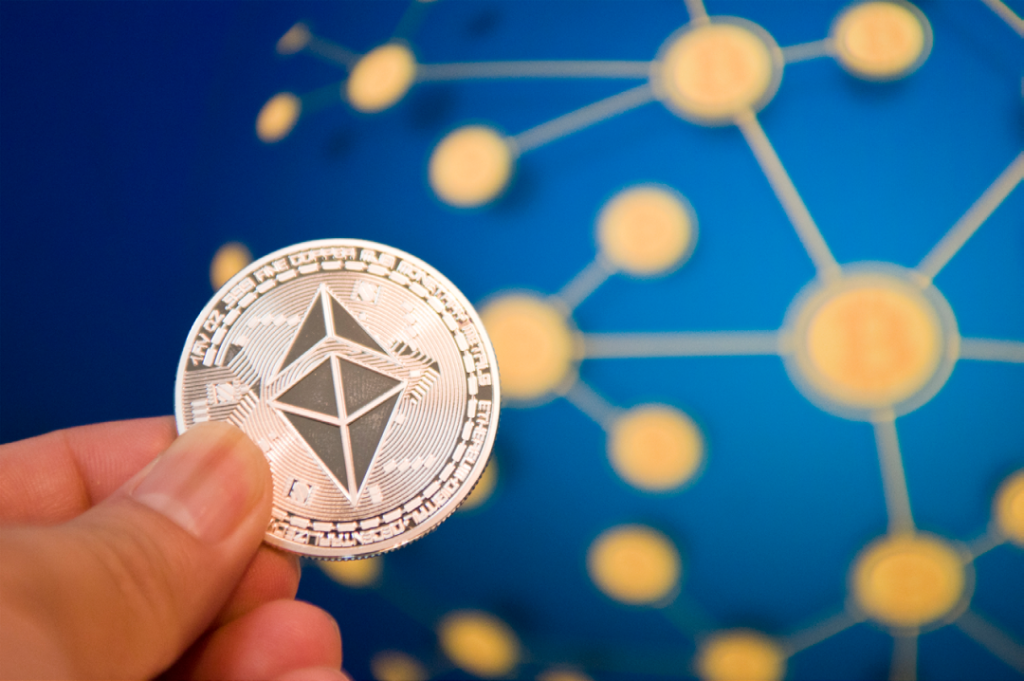Introduction
In recent years, blockchain technology has rapidly gained attention across various sectors, from finance to supply chain management, and even to healthcare. One of its most exciting applications lies in the realm of global payments. The core characteristics of blockchain—decentralization, security, transparency, and immutability—suggest that it could revolutionize the way money is transferred, stored, and tracked globally.
As traditional payment systems continue to face challenges like high transaction fees, slow processing times, and lack of transparency, blockchain technology offers a promising alternative. By enabling direct peer-to-peer transactions without the need for intermediaries, blockchain could potentially reshape the global financial landscape.
But the question remains: Will blockchain technology become the core of the future global payment system? In this article, we’ll explore the potential benefits, challenges, and hurdles of integrating blockchain into the global payments ecosystem, as well as its current and future role in reshaping the way we handle money.
What Is Blockchain Technology?
At its core, blockchain is a decentralized ledger that records transactions across a distributed network of computers. Unlike traditional centralized systems, where a central authority (e.g., a bank or payment processor) controls transactions, blockchain allows for peer-to-peer transactions to occur without intermediaries.
Key features of blockchain include:
- Decentralization: No central authority controls the network.
- Transparency: All participants can view the transaction history.
- Immutability: Once recorded, transactions cannot be altered.
- Security: Transactions are cryptographically secured, making them resistant to tampering and fraud.
These attributes make blockchain particularly well-suited for use in payments, where transparency, security, and efficiency are critical.
Current Issues in the Global Payment System
Before diving into how blockchain can transform global payments, it’s essential to understand the limitations of the current global payment system. Today, most international payments are processed through banking networks, payment service providers (PSPs), or SWIFT (Society for Worldwide Interbank Financial Telecommunication). While these systems are effective in many ways, they come with several key problems:
1. High Transaction Fees
- Issue: Cross-border payments often come with significant fees, particularly for smaller businesses or individuals. For example, sending money internationally through traditional banking channels can involve several intermediary banks, each of which takes a cut of the transaction, driving up the overall cost.
- Impact: These high fees discourage microtransactions, remittances, and cross-border trade, especially for people in emerging markets.
2. Slow Processing Times
- Issue: Traditional payment networks, especially for cross-border payments, can take days to process. While some payments are fast, many require the clearing and settlement of funds across multiple intermediaries, resulting in delays.
- Impact: This delay can be particularly detrimental in industries requiring real-time settlement, such as trading or global supply chains.
3. Lack of Transparency
- Issue: Many traditional financial systems operate as “black boxes,” where end users have little visibility into how their transactions are processed. This lack of transparency can lead to fraud, errors, and delays that are difficult to trace.
- Impact: This lack of accountability often results in distrust among users, and a lack of efficiency when resolving disputes.
4. Barriers to Financial Inclusion
- Issue: Despite the global expansion of banking systems, billions of people remain unbanked or underbanked, particularly in developing regions.
- Impact: These individuals face significant barriers to accessing financial services, including the ability to send or receive money, save securely, or access credit.
How Blockchain Can Solve These Issues
Blockchain technology presents several solutions to these challenges. Its decentralized, transparent, and secure nature can address many of the pain points associated with traditional payment systems. Here’s how blockchain could improve the global payment system:
1. Lower Transaction Costs
- Solution: Blockchain eliminates the need for intermediaries in payment processing. This can dramatically reduce the cost of cross-border transactions, as there’s no need for multiple banks or payment processors to take a cut.
- Example: Cryptocurrencies like Bitcoin and Ethereum allow for peer-to-peer transactions without a central authority. Ripple’s XRP, for example, aims to make cross-border payments faster and cheaper for banks and financial institutions by using its distributed ledger.
- Impact: Lower transaction fees would make global payments more affordable, particularly for individuals and small businesses. This could especially benefit people in emerging markets who rely on remittances.
2. Faster Processing Times
- Solution: Blockchain technology offers near-instantaneous settlement of transactions. Unlike traditional systems that require multiple intermediaries to validate transactions, blockchain uses a consensus mechanism to validate and record transactions quickly.
- Example: Bitcoin transactions typically take around 10 minutes to confirm, while platforms like Stellar and Ripple offer near-instantaneous cross-border payments.
- Impact: Faster transactions would enable businesses to settle payments quickly, improving liquidity and making financial transactions more efficient.
3. Enhanced Transparency and Security
- Solution: Blockchain’s decentralized ledger allows all participants to view the same transaction record, making transactions transparent and easily auditable. Once a transaction is recorded, it cannot be altered, making blockchain highly secure and resistant to fraud or tampering.
- Example: A company using blockchain for supply chain payments can track the flow of goods and payments in real-time, with complete transparency over the transactions.
- Impact: This transparency can build trust between businesses and consumers, reduce fraud, and improve compliance with regulations. It also helps quickly resolve disputes as every step of a transaction is recorded on an immutable ledger.
4. Financial Inclusion
- Solution: Blockchain offers a way for people without access to traditional banking infrastructure to participate in the global economy. By using cryptocurrencies and digital wallets, individuals in underserved regions can send and receive money without needing a bank account or access to a physical bank.
- Example: In countries where access to banking is limited, mobile wallets using blockchain technology (such as Bitcoin or Litecoin) enable individuals to make payments, transfer funds, and store value securely.
- Impact: Blockchain-powered financial services could open up opportunities for millions of unbanked people, helping to drive financial inclusion in developing countries.
Challenges to Widespread Blockchain Adoption in Global Payments
While blockchain offers several advantages, there are also several challenges to its widespread adoption as the core of the global payment system:
1. Regulatory Uncertainty
- Issue: Governments and financial regulators are still figuring out how to regulate blockchain and cryptocurrency systems. In some jurisdictions, cryptocurrency transactions are banned or heavily restricted.
- Impact: Regulatory uncertainty can prevent blockchain-based payment solutions from gaining mainstream acceptance. Financial institutions and governments need clear rules on how to integrate blockchain into existing systems.
2. Scalability
- Issue: Blockchain networks can be slow to process large volumes of transactions. For instance, Bitcoin can process only about 7 transactions per second (TPS), while traditional systems like Visa can handle over 24,000 TPS.
- Impact: Scalability remains a significant challenge for blockchain to process the vast number of transactions required by global payment systems. New blockchain projects, such as Ethereum 2.0 and Layer 2 solutions, aim to improve scalability, but widespread adoption will take time.

3. Adoption Barriers
- Issue: The global financial system is deeply entrenched in traditional technologies and processes. Adopting blockchain for global payments would require significant investments in new infrastructure, technology, and education.
- Impact: Convincing large institutions, governments, and consumers to shift from traditional payment systems to blockchain-based solutions could take years, especially in regions with limited awareness of blockchain technology.
4. Volatility of Cryptocurrencies
- Issue: Cryptocurrencies, particularly Bitcoin, are known for their price volatility. This can make them less reliable as a means of exchange for daily transactions.
- Impact: If cryptocurrencies are to become mainstream, they need to become more stable. This could be addressed through stablecoins—cryptocurrencies that are pegged to the value of traditional currencies (like the US dollar).
Conclusion: The Future of Blockchain in Global Payments
While it’s still early days, blockchain technology holds significant potential to become the core of the future global payment system. By addressing the limitations of traditional financial systems—such as high fees, slow processing times, lack of transparency, and exclusion—blockchain offers a compelling alternative.
The adoption of blockchain for global payments will depend on several factors, including regulatory clarity, technological advancements in scalability, and widespread acceptance by financial institutions and consumers. Moreover, the rise of central bank digital currencies (CBDCs) and stablecoins could play a crucial role in bridging the gap between traditional finance and blockchain-based payments.
While blockchain is not yet ready to fully replace existing global payment systems, its ongoing development and increasing adoption in various industries suggest that it will play a significant role in shaping the future of payments. As we move toward a more digitally connected world, blockchain could very well become the backbone of global financial infrastructure, offering faster, cheaper, and more secure payment solutions.
















































